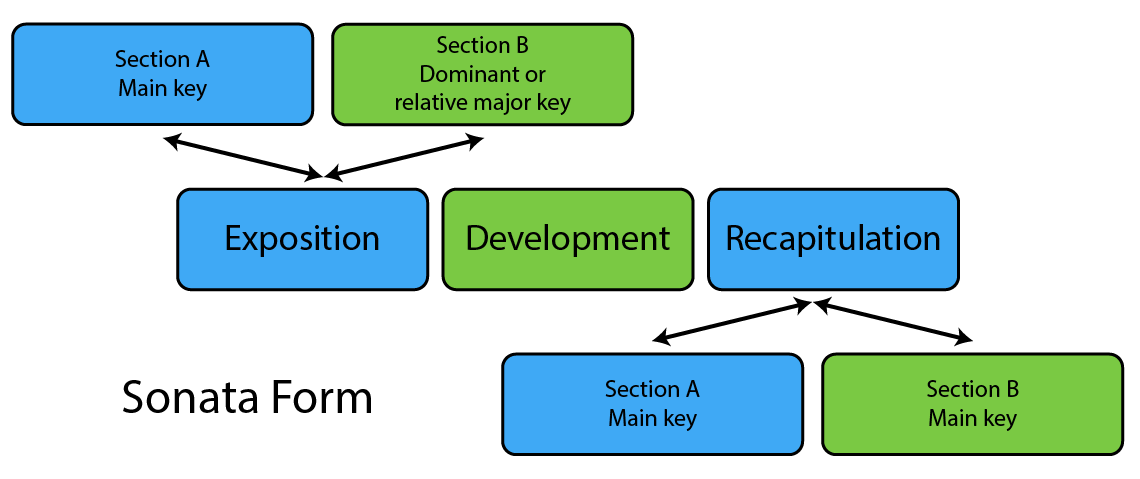Forms : Sonata Form
The sonata form is probably one of the most common forms in classical and romantic music. This form is commonly used in the first movement of sonatas, string quartets, symphonies and even concerts. It has three main sections:
- Exposition
- Development
- Recapitulation
The Exposition
The themes are presented in the exposition. It generally has two sections, the first section in the main key and the second section in the key of the dominant or - in case of minor keys - in the relative major or dominant key. Each section can have one or more themes. The themes may be similar or contrasting. The exposition can begin with an introduction.
The first and second sections are connected using a transition. This transition modulates to the new key. Composers as early as Beethoven experimented with other keys for the second section.
The exposition ends with a codetta.
The Development
In the development section, the composer develops the themes presented in the exposition.
Recapitulation
The recapitulation is a varied repetition of the exposition. The most important difference is that the second section is now in the main key. The composer can add, remove or develop sections and make variations in the texture and orchestration in the case of orchestral works.
The movement ends with a coda that sometimes becomes a second development.
The following image illustrates the sonata form:

